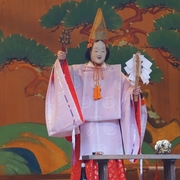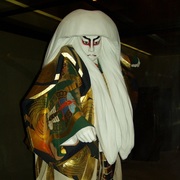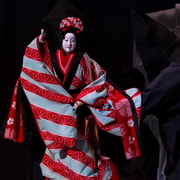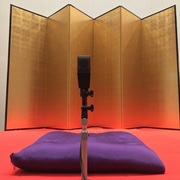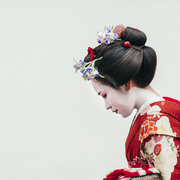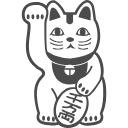Basics of Noh & Kyogen to Enjoy
Noh/Kyogen is one of Japanese classical performance arts; however, many people tend to be under the impression that it is difficult to access.
Compared to Kabuki which is often introduced in many forms of media, not many people have watched Noh & Kyogen, or never known a name of any famous Noh-Kyogen artist.
Now, you are invited to learn the basics of Noh & Kyogen and uncover their attractions so you can fully enjoy watching them.
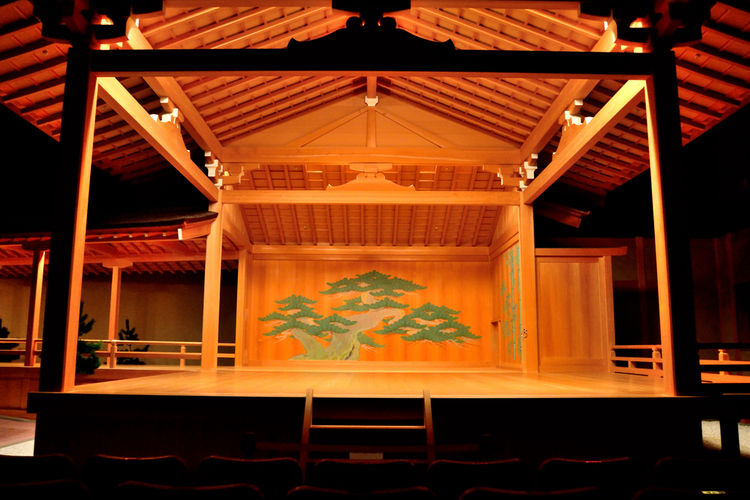
What is Noh & Kyogen?
First, let’s begin with understanding what kind of traditional performing arts Noh-Kyogen are.
Noh and Kyogen originated from a performing art called "Sarugaku", which consists of various types of performances including acrobats, magic, music, or mimicry.
Each of Noh and Kyogen has continued to evolve and refine to its own direction since the Muromachi period (1336 – 1573) to the present.
Since the Meiji period (1868 -1912), a set of preforming arts including Noh and Kyogen along with Shiki-Sanban (Okina) is called “Nogaku”.
Noh is just like “musical or opera” performed with background music, which is typically played with Japanese flutes and drums, and songs called “Ji-utai” where the characters on the stage sing while dancing and playing dramas.
Tales of Noh have some patterns where the main character called “Shite” takes a role that someone not alive such as a dead person, a ghost, a god; while a supporting character (Waki) takes a sacred role such as a monk.
In the highlight scene of many Noh songs, Shite expresses the feelings of guilt or regrets brought back from the time Shite was alive.
Noh is a musical drama, while Kyogen is a so-called " live comedy show" that is composed of "dialogue play (Serifu Geki)" of which tales reflect on commoners’ daily life (like “Sienfield”)
Many Kyogen tales address subjects common to the modern times, such as boss-subordinate relationships or a man with in-law family that even beginners can enjoy watching.
In addition to comical and fun tales, some Kyogen addresses wider range of themes than that of Noh such as tragedy dramas.
Characters of Noh & Kyogen
A variety of celebrities appear in the tales of Noh regardless of fictitious or real.
For example, the songs of "Heike Monogatari", Minato-no Yoshitsune (one of the most famous samurai fighters in the history of Japan), Musashibo Benkei (a famous warrior monk), Shizuka Gozen (Yoshitsue’s mistress) come into play, the Shogun of Heike (Taira clan) appears in “Yoshitsune no miyakoochi (Yoshitsune Exiled from Kyoto)" or “Atsumori no saigo (The death of Atsumori”).
Furthermore, the famous tales from "The Tales of Genji" are often performed in Noh as well.
Particularly, Rokujo Miyasudokoro, known as the tragedy heroine, often appears as a demon-spirit ghost that kills Hikaru Genji(the main character of “The Tales of Genji)’s wife and mistresses one after another, and the section of "Aoi-no ue,” depicts a scene where a monk tries to comfort her spirit.
Characters in Kyogen
Many characters appear in Kyogen tales are careless and goofy, and the troubles they make are humorously depicted.
A character who appears in Kyogen tales most frequently is "Taro Kaja”.
In some tales Taro Kaja is a servant of a Daimyo Samurai or a local clan leader, and sometimes steals and drinks his master’s rice wine secretly kept in the house, or Taro Kaja is deceived by a scammer called "Suppa" which upset his master and gets scolded.
However, in the end, tales finish in a happy ending with a song called “Hayashimono” sung by Taro Kaja.
There are some other interesting and humorous characters such as Yamabushi who acts big despite his inability in supernatural power, Muko who is childish and foolish, or a demon who is actually much more sweetheart than human.
These characters add laughter and tears to Kyogen tales.
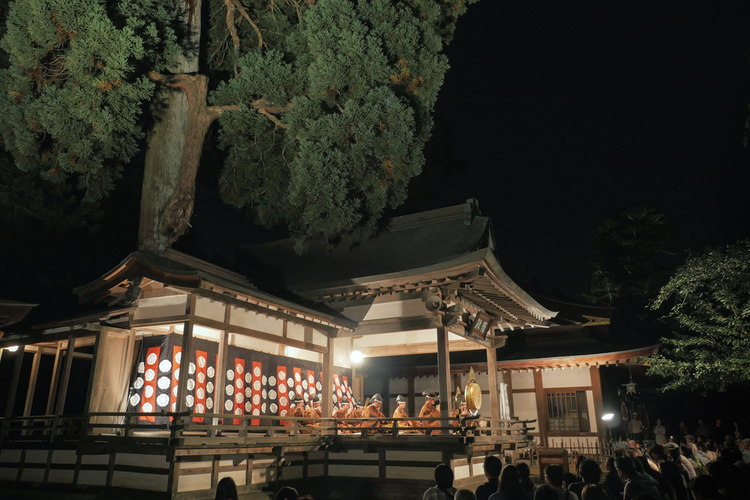
A Suggested Noh Tale for Beginners
Here is a tale we recommend to those who watch Noh /Kyogen for the first time.
F una Benkei
This tale depicts the journey of Minamoto-no Yoshitsune, Musashibo Benkei and Yoshitsune’s followers when they were forced to leave Kyoto (the capital at that time) to the western provinces due to the conflicts with Minamoto-no Yoritomo (Yosthitsune’s older brother, the Shogun)
In the scene that shows the journey to the western provinces, Shizuka Gozen, Yoshitsune’s mistress, is brought back to Kyoto, the capital of Japan at that time, by the arrangement of Yoshitsune, she appears in the costume of white kimono with a sword and dances, called “Shirabyoushi*”, to wish his bright future.
The second half of the tale depicts the departure of Yoshitsune’s party on the boat.
The condition of turbulent sea is depicted along with rapid tempos of music and the movements of Ai who is a role of boatman, then a ghost of Tomonori Taira (Shite in the second half of the tale) appeared with a long katana blade.
After the fight against Yoshitsune’s party, the evil spirits are defeated by Benkei's supernatural power and they run away, then the stage curtains are closed with Shite's “Tomebyoshi (stopping beat)”
This is an unusual style of Noh where the characters of Shite in the first half and the second half are different: the first half of the tale is full of emotions while the second half is uplifting actions.
A Kyogen skit is played between the first and second half of this Noh tale.
* : Shirobyoshi are female dancers in the late Heian period who disguised themselves as men
“ Busu”
This Kyogen play starts with a scene where a master of the house calls his servants, Taro Kaja and Jiro Kaja, before he was leaving the house.
The master warns them by telling "While I am out, never open the pale that contains poisonous substance called “Busu.”
Right after the master left the house, these 2 servants stayed quiet for a while, however, they could not forget about “Busu” out of curiosity, so they finally decided to just peek the inside of the pale by waving a fan.
In fact, what’s inside the pale is sugar of which the master called it poison, and they ate it out sugar, then, the master comes back home. You can imagine what happens next.
This is a Kyogen tale that has once introduced in the textbooks of Japanese language in the preliminary education that some Japanese people may still remember it.
This is a masterpiece of Kyogen we cannot help laughing at the reactions of Tako Kaja and Jiro Kaja of how they make excuses for eating out Busu as well as the reaction of the master.
Conclusion
Any ideas for how even beginners can enjoy Noh and Kyogen that are still prejudged difficult to approach and not enjoyable without prior knowledge?
You can watch Noh and Kyogen shows through the educational program on TV or on the internet, but the best way would be going to the theater and watch a live performance.
Have fun!
By watching and listening to the words and dance of actors, the sound of the hayashi music, you would feel the live atmosphere and have a sense of being in the same space.
That is the most entertaining portion of Noh and Kyogen.
Just go and see some famous Noh masters such as Mr. Masuzaki Nomura and Mr. Munehiko Shigeyama who are stars of Kyogen world.
Anyway, why don’t you go to the theater to watch a live performance and take it easy.



